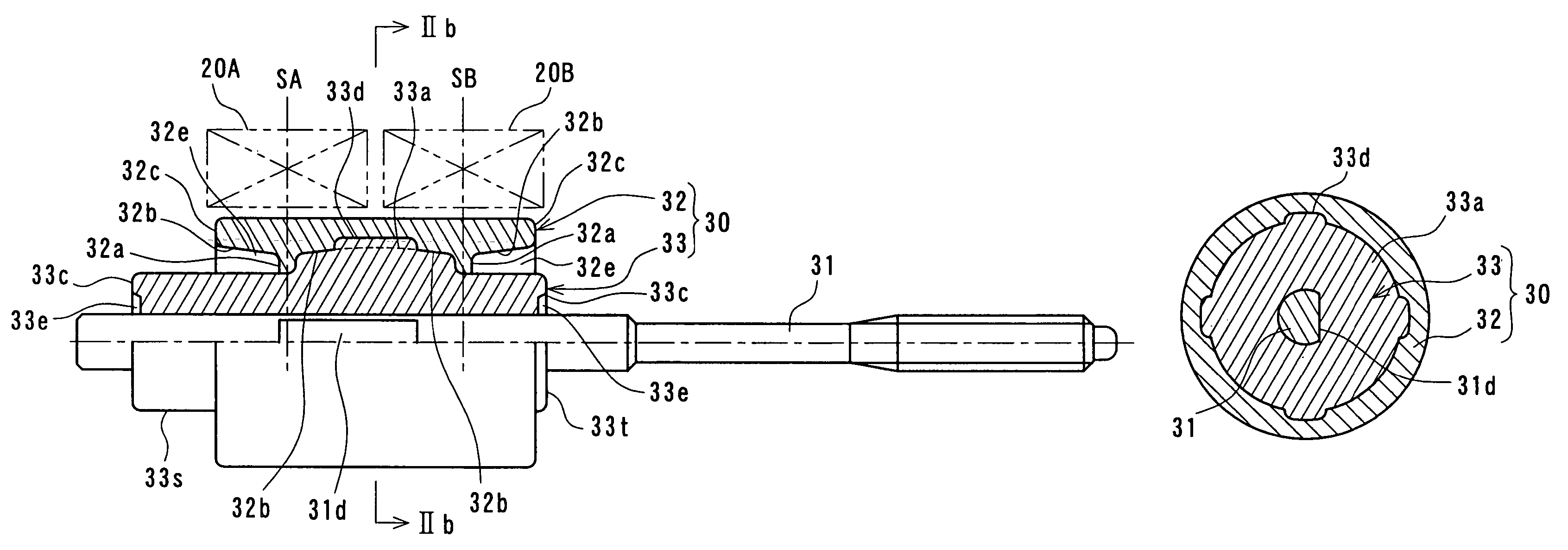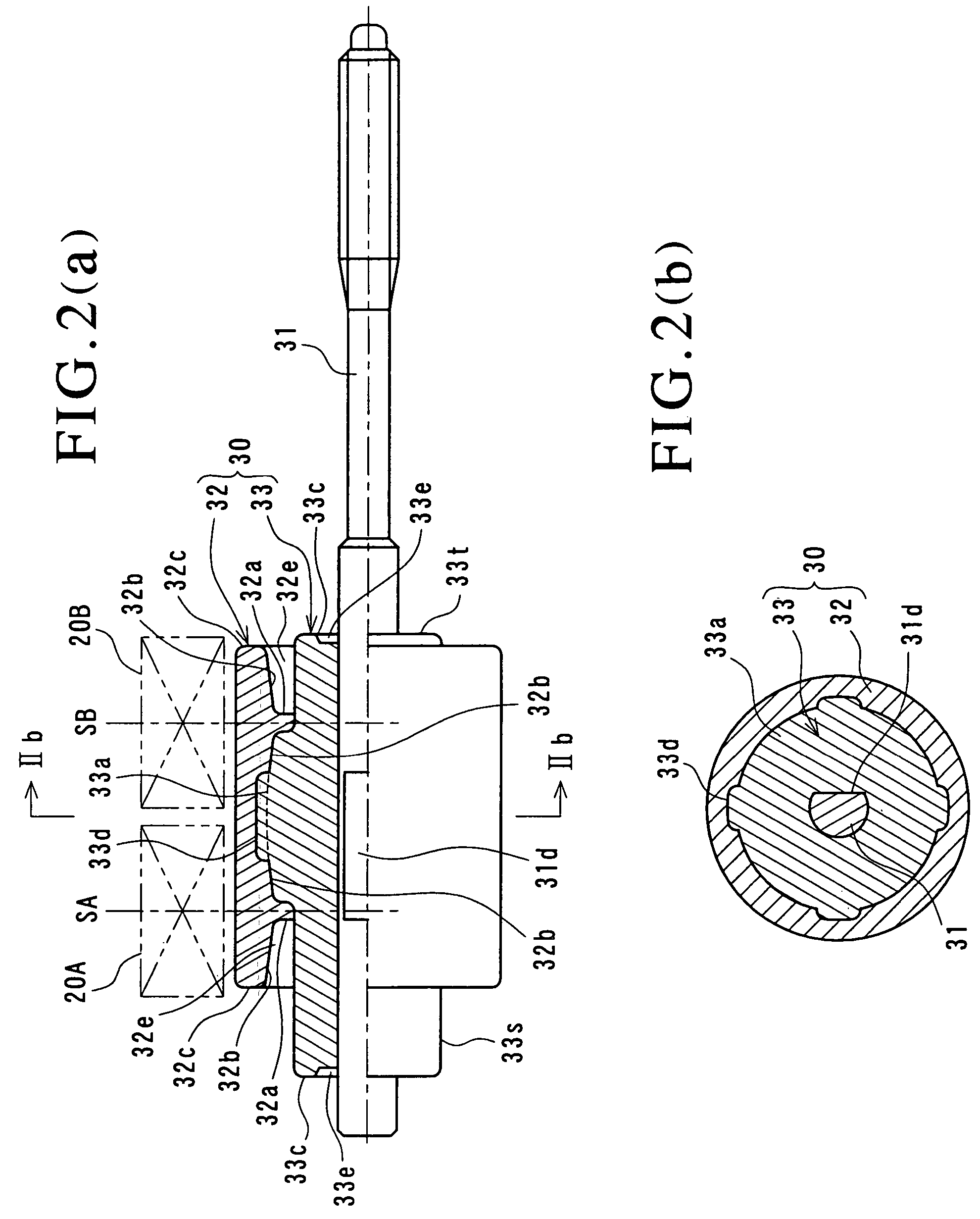Stepping motor
a stepping motor and stepping plate technology, applied in the direction of magnetic circuit rotating parts, instruments, magnetic circuit shapes/forms/constructions, etc., can solve the problems of low drive responsiveness, inability to obtain desired driving torque, and small magnetic force, so as to achieve accurate keeping and easy assembly operation
- Summary
- Abstract
- Description
- Claims
- Application Information
AI Technical Summary
Benefits of technology
Problems solved by technology
Method used
Image
Examples
Embodiment Construction
[0023]Hereinafter, an embodiment of the present invention will be explained with reference to the drawings.
[0024]FIG. 1 is a sectional view showing an entire construction of a PM type stepping motor of the embodiment, FIGS. 2 (a) and 2 (b) are schematic diagrams of a rotor of the same stepping motor by taking out it, FIG. 2(a) is a side view showing an upper half part in section and FIG. 2(b) is a sectional view taken along the arrows IIb to IIb in FIG. 2(a).
[0025]A stepping motor is generally a device which converts an electric pulse signal into a step operation of mechanical interruption, and the PM type stepping motor shown here is constructed to synchronously rotate a rotor magnet which is magnetized in a circumferential direction to form multipoles by switching an electric current passed through a stator coil.
[0026]The stepping motor is constituted of a motor case 10 made of magnetic metal (for example, iron), a stator unit 20 including stators 20A and 20B of two phases that ar...
PUM
 Login to View More
Login to View More Abstract
Description
Claims
Application Information
 Login to View More
Login to View More - R&D
- Intellectual Property
- Life Sciences
- Materials
- Tech Scout
- Unparalleled Data Quality
- Higher Quality Content
- 60% Fewer Hallucinations
Browse by: Latest US Patents, China's latest patents, Technical Efficacy Thesaurus, Application Domain, Technology Topic, Popular Technical Reports.
© 2025 PatSnap. All rights reserved.Legal|Privacy policy|Modern Slavery Act Transparency Statement|Sitemap|About US| Contact US: help@patsnap.com



